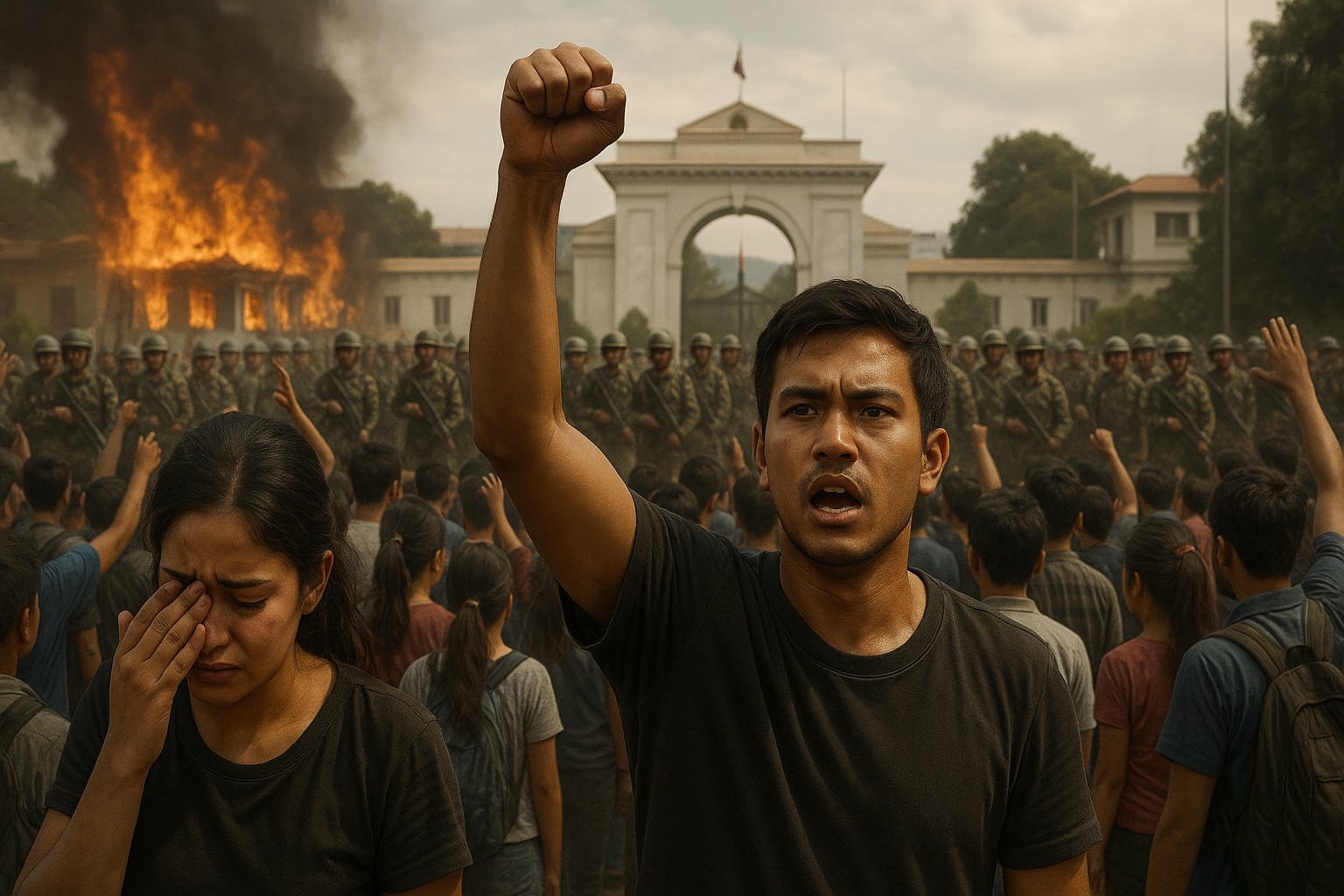Who’s Pulling Gen Z’s Strings in Nepal? The Mastermind Might Be No One

Nepal’s political establishment collapsed under the weight of a movement with no face. Prime Minister K.P. Sharma Oli stepped down on September 9 after a furious wave of youth-led demonstrations that began on September 8 and peaked the following day. The uprising, fueled by anger at corruption and the government’s sweeping ban on 26 social media platforms, spread across the country in hours, leaving parliament in flames, government offices torched, and security forces stretched thin. What stunned observers most was that the rebellion seemed to be led by no one, yet it managed to topple the head of government within two days.
The immediate trigger was the September 4 decision to block Facebook, Instagram, X, YouTube, and dozens of other platforms for failing to register locally, a move authorities insisted was rooted in court-backed regulation. For Nepal’s Generation Z, however, the ban cut deep into their way of life. With over 90 percent of urban youth reliant on digital platforms for work, connection, and expression, the government’s move was seen not as bureaucratic enforcement but as an assault on survival itself. Slogans quickly crystallized this outrage: “Social media banned, corruption open.”
When protesters gathered in Kathmandu on September 8, the mood was charged but organic. By September 9, demonstrations reached their climax, spreading to multiple cities. Independent counts vary, but estimates suggest around two dozen deaths and hundreds injured, highlighting both the speed of escalation and the dangers of security forces confronting a leaderless wave of young people. By evening, Oli had resigned, and the social media ban was lifted. Yet, even after the government’s retreat, the protests continued, slowly transitioning into peaceful vigils and symbolic gatherings, with many crowds now forming outside the Army Headquarters demanding accountability and clarity on Nepal’s political future.
The “who” behind the movement remains the most provocative question—and the most elusive. If there is a mastermind, it is not a single figure but a structure: decentralized digital coordination, swarm tactics, and generational solidarity. Still, speculation persists that some figures may have known more than they let on. Among them is Kathmandu Mayor Balendra Shah, better known as Balen, whose social media posts in the run-up and peak of the protests struck a nerve.
On September 7 at 3:28 PM, Balen wrote: “Tomorrow’s rally clearly and spontaneously belongs to Gen Z, those under 28, for whom I am already too old. I want to understand their desires and ideas. No party, leader, activist, or opportunist should hijack their movement. Though I cannot attend because of the age limit, I fully support them. Dear Gen Z, what kind of country do you want to see?” His post signaled both endorsement and distance—acknowledging the uprising’s independence while affirming solidarity.
Late on September 8, as violence escalated, he sharpened his tone: “You became the godfather of thugs. If you had ever truly been a father, you would understand the pain of losing sons and daughters. The world has never seen such terror. You failed not only as a leader but as a human being.” Though he did not name names, many interpreted the post as directed at Oli. The veiled rebuke suggested Balen understood both the grievances and the vacuum of leadership forming in real time.
On September 9, as Oli’s resignation became public, Balen posted twice, repeating almost verbatim: “We had clearly said this was Gen Z’s movement. Dear Gen Z, the resignation of your killer has arrived. Now remain calm! The loss of public property is our loss. From now, your generation must lead this country. Be prepared! Also, be ready to negotiate with the Army Chief. But remember—parliament must be dissolved before talks begin.” His insistence on parliament’s dissolution and talks with the army injected a new demand into the movement’s narrative, blurring the line between observation and political intervention.
By September 10, he addressed the nation again, this time with a longer reflection: “Dear Gen Z and all Nepalis, you are stepping into a future unlike any in history. Do not panic, be patient. An interim government is on the way, which will hold elections. I fully support your proposal to appoint former Chief Justice Sushila Karki to lead this interim arrangement. This shows your maturity. To those rushing for leadership: your passion and honesty are permanent assets for the nation, not temporary ones. Please wait for elections. Honorable President, dissolve parliament and form the interim government immediately to safeguard this historic revolution.”
These posts, spanning just four days, reveal Balen’s delicate dance: affirming the movement’s independence, channeling its fury, urging calm, and eventually endorsing an interim figure respected for her integrity. His choice of words—oscillating between solidarity, scorn, and strategic counsel—has fueled speculation that he knows more about the leadership dynamics than he admits. Yet he repeatedly insisted the uprising belonged purely to Gen Z, not to any politician.
For now, Nepal stands at an uneasy pause. The streets are calmer, but the political vacuum remains. Crowds gather outside the Army Headquarters, demanding answers about negotiations, interim arrangements, and whether parliament will indeed be dissolved. Without a clear leader, the protest risks fragmentation, but its strength lies precisely in its refusal to be owned by anyone. The resignation of a prime minister has proven that decentralized youth power can shake the state. What remains uncertain is whether this same force can now shape a sustainable political order—or whether the absence of leadership will allow the old elite, or the army itself, to seize control of the narrative.
The mastermind, it seems, may truly be no one. And in Nepal’s fragile democracy, that possibility is both its most hopeful promise and its most dangerous gamble.
Gen-Z
![From Kathmandu to the World: How Excel Students Are Winning Big [Admission Open]](https://nepalaaja.com/img/70194/medium/excel-college-info-eng-nep-2342.jpg)
